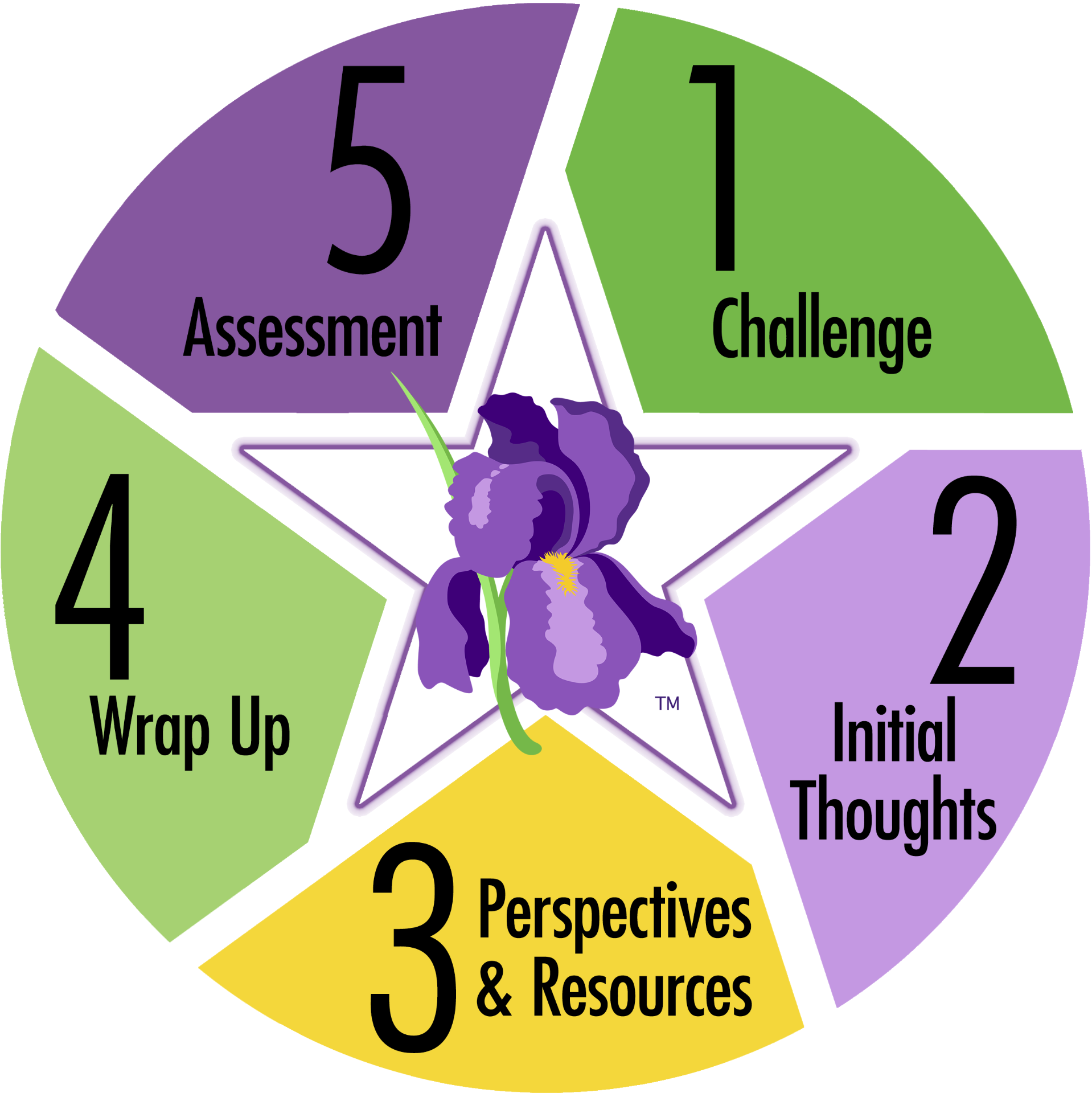Using Modules & Case Studies Resources
How to Use a Module
IRIS STAR Legacy Modules are Web-based instructional resources that provide information about working with students with disabilities. Each interactive module is made up of five components:
- Challenge: A realistic scenario relevant to education professionals
- Initial Thoughts: Questions that allow students to explore and consider what they currently know about the scenario presented in the Challenge
- Perspectives & Resources: Nuggets of information (e.g., text, movies, audio interviews, activities) that allow students to actively engage in learning the module’s main content
- Wrap Up: A summary of the information presented in the previous components
- Assessment: An evaluation tool that offers students the opportunity to apply what they know and to evaluate what topics they need to study further

How do I navigate a STAR Legacy Module?
To begin, click on the Challenge at the top of the STAR Legacy cycle. Movement throughout the sections of the module can be managed by making use of the navigation bar at the right side of the page or by following the links at the top or bottom of each page. The IRIS Center recommends that visitors to the website work through the pages of each module in the order presented in the STAR Legacy cycle, starting with the Challenge and moving to Initial Thoughts, Perspectives & Resources, Wrap Up, and Assessment. The center feels that visitors who skip one or more of these sections may not receive the full informational benefit of the cycle. Please note that many module sections contain multiple pages, hyperlinks, short movies, and sound files.
Learn more about how to navigate our modules by watching this short instructional video.
How to Use a Case Study
IRIS Case Study Units provide students with applications to strengthen their understanding of select topics as well as a way to enhance their problem-solving abilities. Case Study Units have several elements:
- STAR Sheets—Each strategy is accompanied by a STrategy And Resource (STAR) Sheet. These contain a description of the strategy, relevant research findings, an explanation of how the strategy is implemented, and references. It is through STAR Sheets that students locate the information they need to answer the assignment questions.
- Case Studies—Each case study presents a problem-based classroom issue or challenge. Designed to accommodate a wide range of student skills, case studies are divided into three progressive levels:
- Level A—Gathering information
Level B—Analyzing information
Level C—Synthesizing information - Case studies contain the following components:
- Background—This contains information about the students.
- Scenario—A Scenario is a description of a hypothetical situation that requires a teacher’s response. In Levels A and B, goals for the target child are provided. At Level C, however, no goals are provided, and identifying goals becomes part of the assignment. In addition, at Level C, areas of strength for the target child are provided to assist in the development of goals.
- Possible Strategies—For Levels A and B, multiple strategies, which are described in the STAR Sheets, are suggested as responses to each scenario.
- Assignment—An assignment accompanies each case study and is appropriate for the case study level. At Level A, assignments allow students to show that they understand the possible strategies for that case. At Level B, students additionally are asked to analyze the information presented in the STAR Sheets. At the most complex level, Level C, students are also required to compare and defend their application of specific strategies.
- Level A—Gathering information
- Instructor’s Guide—An answer key for instructors to use in the assessment of student assignments is available on request.